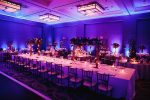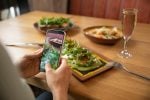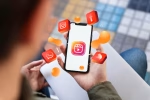Empty seats at special events hurt more than just revenue. Every vacant chair represents a missed connection, a lost opportunity, and potential business growth left on the table.
But the data tells us something interesting.
The most successful special event organizers don’t rely on gut feelings or outdated methods. They use precise, data-driven strategies that consistently fill seats.
What’s different about successful organizers? They understand that filling seats isn’t about random marketing tactics or hoping for the best. It’s about making calculated decisions based on information, real numbers, and proven methods.
In this comprehensive guide, we’ll examine the exact steps successful event organizers use to:
-
Track and optimize ticket sales patterns
-
Create pricing strategies that maximize attendance
-
Build marketing campaigns based on actual audience behavior
-
Deploy engagement techniques that boost repeat attendance
You’ll learn specific, actionable methods to increase your special event’s attendance and revenue. We’ll look at case studies, analyze the numbers at hand, and break down the exact systems that work in today’s marketplace.
The difference between a half-empty venue and a packed house often comes down to understanding and applying the right data. Let’s explore how you can use these insights to transform your next special event.
Boost customer satisfaction with just a few clicks
Most-Loved Features:
- On-demand drivers
- Real-time GPS tracking
- Delivery confirmation photos
- Over 50% of customers report a smoother delivery experience
Step 1: Implement Effective Special Event Marketing Strategies
-
Reach more people with targeted social media ads.
-
Use influencers to extend your special event’s reach.
-
Ensure your event website is visually appealing and informative.
Leverage Social Media Platforms
Social media platforms are powerful tools for special event marketing. They help connect businesses with potential attendees. To effectively use social media for your event:
-
Targeted Ads: Use social media ads to reach specific demographics. Platforms like Facebook and Instagram allow detailed targeting based on age, interests, and location. This ensures your event reaches the right audience. Facebook, for example, offers targeted ad options that can increase your event’s visibility among users who match your precise criteria.
-
Engaging Content: Create content that captures attention. Videos, graphics, and short stories about your event can generate interest. Highlight what makes your event unique. Use captions and hashtags to increase visibility. According to some experts, adding flair and excitement to your call-to-action can drive more engagement.
-
Platform Choice: Choose platforms that align with your target audience. LinkedIn is popular for B2B events, with 79% of event marketers using it to promote events. Facebook and Instagram are great for reaching a wider audience, while Twitter works well for real-time updates and engagement.
Importance of Social Media Statistics
Social media is crucial for event planning and promotion. A large percentage of virtual event planners rely on these platforms for attendee registrations. 60% of virtual event planners utilize social media for valuable attendee registrations.
Collaborate with Influencers
Partnering with influencers can greatly expand your event’s reach. Here’s how to collaborate effectively:
-
Identify the Right Influencers: Choose influencers who are relevant to your industry. Their audience should align with your target demographics. Look for those with a strong following and an engaged audience. These influencers can amplify your event’s message and attract more attendees.
-
Build Relationships: Establish trust and a good relationship with influencers. Genuine partnerships yield better results. According to Konstanze Alex, Head of Global Digital Storytelling at Cisco Systems, building trust and a lasting relationship is key when engaging with influencers.
-
Leverage the Other: Neal Schaffer, an influencer marketing expert, suggests leveraging other social media users who can help spread the word about your event. These users can boost your event’s visibility, adding layer to your marketing strategy.
Design an Eye-Catching Website
Your website is often the first impression potential attendees get. To make it effective: Creating a memorable dining experience at your special event is another crucial factor that can influence attendee satisfaction and engagement. Simple enhancements such as lighting adjustments, seating arrangements, and background music can transform the ambiance and make guests feel more comfortable and valued. For creative ideas on how to elevate this part of your event, explore our detailed post on enhancing your dining experience with three easy tweaks.
-
Ensure Mobile-Friendliness: Many users will visit your site using mobile devices. Make sure the site is responsive, meaning it adjusts to different screen sizes. This is essential for a seamless user experience and keeps potential participants interested.
-
Provide Comprehensive Details: Include all relevant details about the event. This includes the date, time, location, agenda, and any special guests or activities. Clear and concise information lets potential attendees know what to expect.
-
Interactive Elements: Integrate elements like Says countdown timers or chat boxes. These can increase excitement and provide immediate answers to visitor questions, maintaining engagement and interest in the event.
Role of Websites in Event Success
Websites are a potent tool for event marketing. A significant portion of marketers believes websites are the most effective channel for event promotion. Creating a memorable dining experience at your special event is another crucial factor that can influence attendee satisfaction and engagement. Simple enhancements such as lighting adjustments, seating arrangements, and background music can transform the ambiance and make guests feel more comfortable and valued. For creative ideas on how to elevate this part of your event, explore our detailed post on improving your dining experience with three easy tweaks.
By following these steps, you’ll be well-equipped to implement effective marketing strategies for your event. The next section will explore ways to keep your audience engaged. One area often overlooked in event planning is how the overall atmosphere can impact attendee experience. Enhancing the ambiance through thoughtful design and careful consideration of factors like lighting, seating arrangements, and background music can significantly elevate the dining experience during your event. For insights on this topic, check out our post on ways to upgrade your dining environment with simple tweaks.
Step 2: Utilize Audience Engagement Techniques
-
Boost sales by personalizing your communication.
-
Keep your audience engaged with interactive elements.
-
Drive more engagement through social media.
Create Personalized Communication
Personalized communication is not about sending random messages. It’s about reaching individual attendees on a personal level. Personalized emails, for instance, have the power to deliver six times higher transaction rates than generic emails. That’s a significant advantage, especially when targeting sales. Begin by segmenting your audience based on factors like demographics, interests, or past event attendance. This approach enhances the relevance of your message and increases open rates by 14.31% and click-through rates by 100.95% compared to non-segmented campaigns.
When crafting your email, it’s crucial to include personalized offers that align with previous interactions. If someone has attended your event before, offer them a loyalty discount. For attendees who showed interest but didn’t complete a purchase, a reminder about the upcoming event complete with a special offer might do the trick. The more tailored the message, the better the results will be.
Tools for Personalization
Leverage email marketing platforms. These tools can automate the personalization process, minimizing the required manual effort while maximizing their impact. They allow you to schedule emails, track engagement, and refine your strategy based on real-world results. Wouldn’t it be fantastic if people always felt like you were speaking directly to them?
Implement Interactive Elements
Interactive elements make your special event memorable. They transform passive viewers into active participants. Introduce elements like polls or Q&A sessions during your events. Real-time interaction encourages attendees to engage more. Imagine hosting a Q&A session where attendees can ask questions and vote on the most pressing ones. This approach ensures that the most relevant topics are addressed, creating more value for attendees.
Take advantage of social media platforms to drive engagement beyond the special event itself. Encourage attendees to post about their experience using specific hashtags. This feature not only increases interaction during the event but also amplifies its reach to their followers. Including short video snippets is another effective element, given that 78% of people prefer learning through video content.
Engaging Through Social Media
Utilize platforms like Instagram, where each year the engagement rate can reach up to 1.16%. Sharing user-generated content makes attendees feel valued while promoting your event to a broader audience. Emphasize customer care on social media, as seen with the preference of 72% of Gen Z users for Instagram.
Employing these methods can shift the event experience from standard to extraordinary. It’s about making every interaction count, making attendees feel involved. By understanding and implementing engagement techniques, you pave the way for increased event sales.
Step 3: Focus on Revenue Optimization for Special Events
-
Tiered pricing captures diverse customer segments.
-
Upselling boosts total event revenue.
-
Revenue optimization tactics drive profitability.
Offer Tiered Ticket Pricing
Tiered ticket pricing helps attract a wide range of attendees. This method aims to satisfy various budget levels and preferences. It can encourage people to commit earlier and pay more for special events and perks.
Create Early-Bird Specials and VIP Experiences
You can start with early-bird specials. These are discounted rates for those who purchase tickets well in advance. This not only rewards proactive attendees but also aids in forecasting demand. Set a timeline for when these rates will expire to create urgency. Clearly state the savings they get by purchasing early.
VIP experiences should include premium offerings like front-row seats or exclusive networking sessions. Craft these packages to bring more value at higher price points. Beyond attractive seats or experiences, think of what else might pique VIP interest. This could mean exclusive meet-and-greets, backstage tours, or even premium food and beverages.
Adjust Pricing Based On Audience Demand and Feedback
Regularly review ticket sales data. This will reveal if there are any pricing problems. If one tier sells faster than another, adjust the prices. For instance, increase the price of sold-out tiers and lower the others. This keeps demand stable across options. Gather feedback from past attendees. You can use surveys or feedback forms to understand past experiences and expectations.
Upsell Additional Products or Services
Upselling enhances event value. This approach improves both attendee satisfaction and event revenue. Attendees take home more than just enjoying participating in an experience—they carry souvenirs or enhanced experiences.
Provide Merchandise or Exclusive Packages
Introduce exclusive merchandise linked to a special event application or the special event. This could be branded apparel, collectibles, or digital downloads. Ensure that these items align with the event’s theme or speakers. You should offer products that aren’t just for souvenir purposes but can be used or worn beyond the event.
Exclusive packages could include perks like dinner with friends and family, a speaker, workshop access, or even a private session. This requires a bit more planning but can substantially boost interest and revenue.
Bundle Services With Event Tickets For Added Value
Bundling combines tickets and other products or services at a lower price than buying individually. This creates a perception of higher value. For example, bundle a ticket with a t-shirt and a digital post-event content pack. Highlight the savings to attract buyers.
Also, consider partnerships. Collaborate with participating local businesses for attractive bundle offerings. This could be restaurant vouchers for food or discounts on local attractions. Such packages enhance the event experience, making it more memorable and easier to associate with additional perks.
Step 4: Use Analytics in Special Event Planning
-
Use data to improve special event outcomes.
-
Set clear goals with analytics.
-
Boost event revenue through strategic decisions.
Track Special Event Performance Metrics
Monitor Ticket Sales and Attendance Rates
You can start by collecting data from ticketing platforms. Note ticket sales trends, spikes during promotions, and last-minute purchases. It is better to use these patterns to anticipate future demand.
Compare attendance numbers with ticket sales. Investigate no-show rates if low attendance becomes consistent. Use simple spreadsheets or tools like Google Analytics to spot patterns.
Analyze Engagement Levels on Various Platforms
Look at website visits and social media interactions. You can use platform analytics to see which posts attracted the most attention. Engagement rates can indicate what content your audience prefers.
Pay attention to the time of day and type of content that works best. Review email open rates and click-through rates. This information tells you what messages your audience responds to.
Once you identify strong engagement areas, plan similar content for upcoming events. This approach can help deepen connections with your audience, ideally increasing attendance and revenue.
Use Data to Optimize Future Events
Adjust Marketing Strategies Based on Past Data
Review past marketing performance to find what worked. Focus on the channels with high return on investment. Say, Facebook ads yielded more sales. Use more funds in that area for the next event.
Test different ad copies and visuals. Analyze which ones convert the best. This test helps refine messages and creative for future promotions. Store these insights in a central database for easy access.
Reassess collaborations with influencers. If specific influencers lead to more engagement or sales, prioritize those partnerships.
Importance of Successful Events in Businesses
The path to filling seats at special events is based on data and proven business strategies. By tracking metrics, personalizing communication, and testing different pricing models, you can create events that attract and retain attendees.
The key is to start small and measure everything. Begin with one social media platform, test your messaging, and expand based on results. Pay attention to which ticket tiers sell fastest and what promotional tactics drive the most sales.
Remember that success in event planning comes from constant refinement. It is best to use analytics to understand attendee behavior. Track which marketing channels bring the highest ROI. Study engagement patterns to optimize future events.
Your next steps are clear: Choose one strategy from this guide. Implement it for your next event. Measure the results. Then, add another strategy. Build your approach systematically, always letting data guide your decisions. To further enhance your event’s success, focusing on guest experience is crucial. Implementing strategies that prioritize customer satisfaction can significantly impact return attendance rates. For insights into effective guest experience strategies that keep customers coming back, check out our post on enhancing guest experiences.
The special event industry changes fast, but these fundamentals remain: Know your audience, test your assumptions, and make decisions based on data. With the application of these principles, you can create events that consistently fill seats and generate sustainable revenue growth. To complement these strategies, consider emerging industry trends that can enhance your event’s appeal. Staying informed about new developments in related sectors, such as the food industry, can help you create a more engaging experience for your attendees. For example, incorporating popular dishes or catering styles can significantly elevate your event’s quality. Discover some of the most impactful trends in the food industry that could inspire your next special event in this insightful post about the latest restaurant trends.














